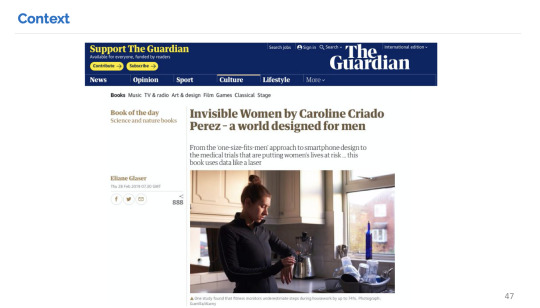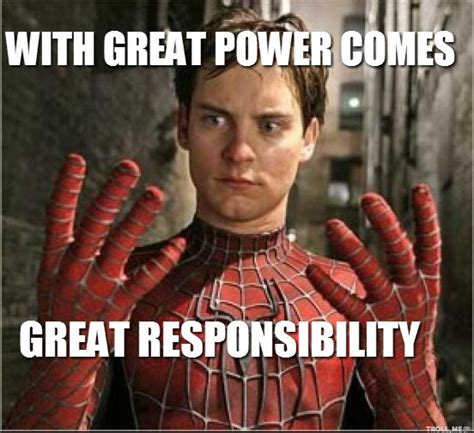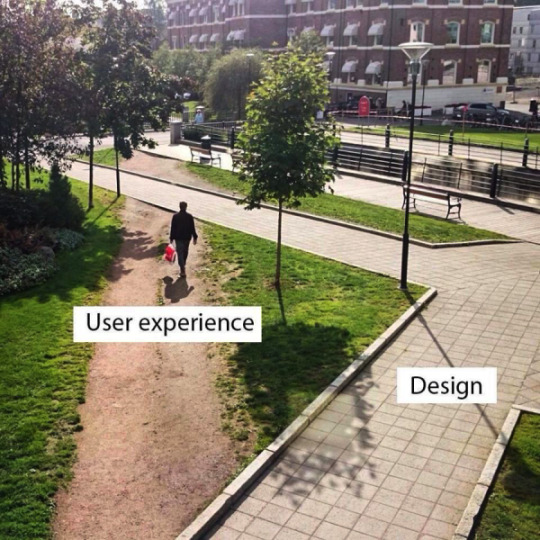Don't wanna be here? Send us removal request.
Text
Digital Equity
What reading did you choose?
Community perspectives on race, power, and colonialism in technology by intersectTO
"DECOLONIZING DIGITAL SPACES" by Alexander Dirksen
DIGITAL JUSTICE PRINCIPLES by Nasma Ahmed
What were the common themes discussed in the readings?
I intentionally selected readings that converged on common topics of:
Digital equity
Racial justice
Innovation
How do these themes relate to what we have learnt in the class so far this semester?
I know that we learned a lot about user design in class, but if we’re being honest, there are some users that we simply don’t design for. Women, people of colour, people in poverty, people with disabilities, you name it. They’re often ignored, because it’s easy to do that, and because our society has bene manufatured in a way that invisibilizes them and their needs. Society always heralded technology would be a great equalizer in society, but in fact it often heightens the inequalities that already exist.
How do these themes resonate with your sense of digital justice and equity?
These themes resonate with my sense of digitial justice by connecting with my desire for racial equality. As a social science student who works a lot with Statistics Canada data, I see that there is a dearth of racially disaggregated data. And that drives me crazy. If you don’t have data about a problem, how can you prove that it’s real?
If we create new and improved technology (ie. innovate), we aren’t actually improving society if EVERYONE isn’t being served. If that’s the case, then it’s simply another tool for an opressive regime of the white masculine rich hedgemony. Rather than Alexander Dirksen’s “power without purpose” it is “power for the wrong purpose.”
0 notes
Text
Data
At first:
This week’s lecture was on data and evidence-based decision making.
If you'd asked me at the beginning of the module what I knew about data and evidence based decision making, I would have said "Nothing". However, when Honey was presenting her slides, I recognized an author: Caroline Criado. I had listened to an interview shortly after the release of her book, Invisible Women. The book was about how if you collect data disaggregated by sex, and USE that data to inform future decisions, then the policies you make can be totally different. A few weeks ago I ranted about snowploughing policy in Karlskoga, Sweden, and how after collecting data disaggregated by sex, the city was able to change their snowploughing routines and prevent a lot of snow-related injuries. That is the power of data informed decisions. Radical.

The Experience
I didn't know "nothing" about this topic. In fact, I am raving manwoman about data collection. The one thing that I am most passionate about is race-based statistics. Although race is a social construct, its impacts are HUGE. And yet we have very little data. So little, that I think we don't collect it in order to NOT have evidence supporting the fact that it exists. I mean if you don't have statistics proving something is a problem, they the problem isn't real, right?
Anyway. This week’s lecture was on data and evidence-based decision making. During this module, I learned two key things: • Decisions are only as good as the data you collect, and • The data that's collected isn’t very good
Honey says that data should underpin each part of how government works, but that's not how democracy works. Democracy is built in a way where our decision makers have to find data that supports a solution, rather than finding a solution that is supported by the data. Parties propose solutions on their platforms, people vote for them for semi-arbitrary reasons, and they make policies based on those platforms uninformed by any kind of data.
I'm not criticizing Honey's viewpoint. I myself believe we need to start collecting more data. I'm just saying that as a system, we aren't built in a way that encourages us to collect it. In fact, we are encouraged to hide it. That's heavy.
Takeaways
One question I have is something I’ve been wondering throughout this course, that was weiging heavily on me when Honey asked the class if we:
In order to collect good data to make informed decisions, or apply design thinking to create great products, we need to fundamentally change the way government operates, or at least change some things in our departments. How do I, a newly minted graduate trail-blaze my way through government and encourage these changes without looking like a crazy lunatic? And lets say I wait until I become an ADM or some other high rank and I have become too absorbed into the system that I forget why I came here in the first place?
I guess that’s also another takeaway from this module. How do we remain vigilant and strive for change when its so much easier to be taken away by the current?
Just one final takeaway: It sucks to have to be the one who initiates change.
0 notes
Text
Government as a Platform
At first:
I had very little knowledge about platforming. I think the only exposure I had to it was when Sibohan (a previous speaker) mentioned that Parks Canada wanted the Canadian Digital Service to create a webstore with their merchandise. However Sibohan suggested that the department simply use Shopify. I didn’t know this at the time, but this is an example of a platform.
The experience:
Firstly, it was really heartwarming to see the bond between the Daren, the guest speaker and my professor, Sameer. All of our classmates commented, “that’ll be us (our cohort) in twenty years!”
I also learned that the government can use API’s to openly release data to third parties and have them leverage that data to create services. I already knew about this because of the TTC apps that I use in Toronto to get around the city. What I didn’t know was the fact that APIs do more than just release the information, they crunch numbers and hide things from the public that are confidential. (As an aside, I think Google maps uses a different API than all the other apps, because their bus/streetcar arrival timings consistiently diverge).
One gap in knowledge that this module filled was the platforms that can be used to make services easier to implement. Identification, payment, verification of data, all these things make services easier and predictable. That’s one the the reasons I like shopify webstores, because it “recalls” my payment information from previous shopify stores and makes it that much easier for me to complete the purchase. I think this will not only make things easier for users, but also people who build, implement, and maintain services. You won’t have to reinvent the wheel each time, you’ll know what works and what doesn’t, and you don’t have to train new people for each new service. This streamlines the whole process across the board. Talk about lean!
Takeaways:

I learned that data carries a lot of power, but also a lot of responsibility. Collecting information is great for convenience. However, how does a government balance security/privacy and user convenience?
0 notes
Text
Reflecting on Design Thinking and User Design
At first:
Coming into this module I already knew a little bit about the topic. I knew about agile, and I have a couple friends who are developers so they gave me an idea about what a “sprint” was, as well as “user stories”. Going into the topic I didn’t have any expectations on what I’d learn, but I was eager to listen to the guest speaker. I love learning about design so I was pumped.
The experience:
I liked that the guest speaker, Sibohan, walked us through each step of the agile process. Although our cohot had a bit of exposure to agile in our project management class, I really apreciated getting an end-to-end walktrhough of the process, it connected all the dots for me.
One thing I questioned about the team project was whether or not students even wanted to connect with professors in the first place. Although scientifically having more contact with professors is seen to be good for learning, some students choose to go to bigger schools like UW and U of T specifically for the anonymous experience. I know I did, and I think I got pretty good grades. I preferred to study alone, read and contemplate the coursework on my own. Depending on the class and my interest in the topic I would often drop by for office hours, but that entirely depended on the class. So for this assignment, I found myself questioning the premise a bit.
Takeaways:
A quesiton I had about this module was the following: If different people like different things, how come we don’t create custom environments based on user desires? Like A/B testing for small details but what if a user likes it and wants to keep it? So basicially making services somewhat custom for each user. For example an iPhone home screen looks different for each user, because the user is able to customize it a bit.
Overall, I didn’t take away as much from this module as I had hoped. I’m not sure if its because I am just generally interested in design so I know a lot about it, or if it was because I was overworked. Either way, I will try to get more value out of the next module.
1 note
·
View note
Text
A Reflection on User Needs
“We fail more often because we solve the wrong problem than because we get the wrong solution to the right problem.” – Russell L. Ackoff
At first:
I knew a little bit about user experience from my knowlege of urban planning. desire paths are a classic urban planning example of users literally carving their own experience. These paths are created when users create a new trail in an urban landscape via erosion that was not a part of the intended design (see photo). Sometimes facilities will reach in and pave a real path where the desire path once existed, to conform to user need.

This module reminded me of the example of snowplowing scheduling in Karlskoga, Sweden. The small town was undertaking a gender analysis of their city’s policies and programs. Through this analysis, Karlskoga found out that male and female driving patterns were very different. Men typically take direct trips, such as going from their home into work, and back home. While women on the other hand, often daisy-chain their trips: from their home to the grocery store to the hair salon, to an elderly relative’s, back to their home. Not only would women make trips all over the neighborhood, but they would often walk rather than drive.
The City council then switched their snowplowing schedule from the arterial (main) streets to plowing the local streets and sidewalks first. As it turns out, driving in the snow is safer than walking in it. This transformed the number of people in the emergency room that were injured by slips and falls, especially women. As a result, the town saw cost-savings in their healthcare bill. Now, Swedish snowplowing schedules weren’t inherently designed to hurt women as they’re walking to the store, but after examining the user experiences, the redesigned plan changed the quality of life for their citizens. By focusing attention on the user rather than on the service, this small Swedish town saved on costs and created a better service that catered to unique user needs.
The Experience:
This module allowed me to gain a new awareness of user research in a government context. It also allowed me to look at issues from a user-experience frame. For example, the snowplowing in Sweden was originally a gendered analysis issue, but when looked at from a user-experience perspective, it allowed me to gain new insights in determining how user needs can be better integrated.
While listening to the presentations done by other groups, I realized that although the exercise was to create something with only user-input, the mere fact that we set about creating a digital service was prescriptive. Maybe communication isn’t the issue. Like Taylor’s persona in Halie’s group who had a disability, and would probably prefer conveniently designed accessible walkways as opposed to a map that told her how to get around construction. Aman’s group the other hand, proposed an app or notification telling students that the bus was going to drop off students in the wrong places due to construction. However, this would not alleviate students’ concerns. In this situation, we would have to collaborate with other departments, such as facilities and create more user-focused infrastructure. A digital service simply wouldn’t be enough.
Takeaways:
Questions I have regarding this module are the following:
What do we do when users don’t know exactly what they want/need?
What do we do when users only think about the service, but not about how difficult/expensive it is to execute their idea?
How do we calculate/take credit for cross-jurisdictional benefits? In the Swedish example, changing snowplowing schedules resulted in healthcare savings. How does that factor into a department’s “successes”?
0 notes
Text
A Reflection on my Introduction to Digital Government
At first:
I previously worked in privacy as a junior PIPEDA investigator, so I was already familiar with legislations such as CASL (Canadian Anti Spam Legislation), and the Personal Information Protection and Electronic Documents Act (PIPEDA). These regulations have been crafted over the years to deal with the changing digital landscapes that businesses have become increasingly involved in. They seek to counter some of the negative externalities and risks of our increasingly digital world. So was already familiar with the regulatory aspect of governments’ involvement in the digital world.
I also recently wrote a short essay on cybersecurity for an internship application, so I through the research process, I learned a lot about digital government and cybersecurity. It was interesting to learn about the many tradeoffs governments face when regulating the private sector's digital presence.
The experience:
During the introductory module, I learned that governments don't only act as mediators and regulators, they offer their own digital services too. These digital services comprise the bulk of what digital government really is. I also learned that these services come with their own array of problems. This broadened my limited initial understanding of digital government. It is a pervasive part of people's lives, and surely has a place in every department.
Takeaways:
I noticed a lot of parrallels between my hobbies and digital government. One of my personal interests is urban planning, so it was cool to learn that governments are using design thinking by taking a user-first approach when creating their digital services. The various concepts like Service and Design Thinking, Inclusive Design, and Agile, were all familar and translated from planning. I found so many ways that digital government connected to my personal interests that although I was learning about it for the first time, digital government felt oddly familiar! Because of the many parallels, I'm sure it's going to be a subject I love.
After going through this initial module, one question I have is: How do governments incorporate iterative design into their digital services? From my knowledge, government is very risk-averse so it has a hard time pushing out incomplete (beta) programs in the same way the private sector does. So I look forward to learning more about how governments overcome that problem.
1 note
·
View note